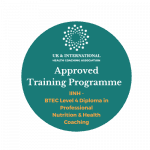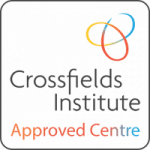Fat has had a rough time in recent years. Ever since Ancel Keys and his famous Seven Countries Study, we’ve ran away from fat. But over the last few years, this has started to change as diets like ‘keto’ and ‘low carb’ have gained popularity. However, the message is still blurred. Both sides remain firm in their message why their approach is best, and of course, the media loves to bring out the extreme opinion of each side. And this just leaves those in the middle more confused than ever. Are eggs bad for me? Does saturated fat cause heart disease? Is animal fat bad for me? The answers to all this and more to be revealed in the following blog post. It all starts with a little history, a big of sneaky myth busting and a final emphasis on what are healthy fats and where to find them in your food.
What are healthy fats: Ancel Keys & The Seven Countries Study.
Ancel Keys set out to study the potential link between diet and lifestyle, and heart disease. In 1958, the ‘Seven Countries Study’ revealed a correlation between population average saturated fat intake and the rate of CVD.
What is interesting, is that Keys actually had access to data from 22 countries, yet he chose to remove these from his final paper and the reason why remains unknown. With regards his findings, Keys really did show a trend between heart disease and fat intake and this trend remains present even when looking at all 22 countries together, albeit not as prominent. But on closer look, the cracks are clear.
Where the study fell short
First and foremost, this was an observational study and no matter how plausible such an association may appear, it is not in itself proof of a cause-effect relationship. There is also no reasoning behind why Keys chose specifically those 6 countries of the 22. But an even bigger error again lies in failing to explore reasons why fat might be linked to heart disease. Keys didn’t address at why fat specifically was the culprit nor did he look at how fat impacted on other causes of death aside from just heart disease.
All in all, drawing correlations is risky because of massive confounding factors that’s almost impossible to account for. Interestingly, Keys got one thing right and that was his staunch stance that dietary cholesterol has zero to do with one’s cholesterol level. If you’d like to read more, this article on Keys is worth checking out.
What happened next
The Seven Countries Study was a landmark project that began our fat-phobia for years and years to follow. It was also boosted by corporate and government interest, especially if it meant taking eyes off sugar. In 1984, Time magazine published the headline “Cholesterol: And Now the Bad News…” (Fat will kill you) and so the fat-phobia kicked off. It spanned roughly 50 years before a near complete 180 when in 2016, butter was declared a friend and the U.S. government declared cholesterol no longer “a nutrient of concern for overconsumption”.
And over those 50 years, our health got worse and obesity levels grew. While the idea was eat less fat in favour of more whole grains, fruits and vegetables, consumers and producers alike simply heard “all fat is bad” and “all carbs are good” and took processing to a whole new level. The main culprits of this inflammation are highly processed carbs such as sugar as well as pro-inflammatory omega-6 oils. And that’s exactly what got pumped into our daily diet. In addition we got more stressed, stopped exercising and started to sleep less which just didn’t help at all.
In short, we love to silo things into a corner ‘good’ or ‘bad’ for us. Nobody wants to accept the answer that “it depends,” but aforementioned studies are now showing that foods affect everyone a bit differently. But let’s pause and go back to fat for a minute. So what are healthy fats and what myths can we now bust?
What are healthy fats?
Fats are one of the three macronutrients and contain 9 calories per gram. They are made up of triglycerides which is called an oil if it’s liquid at room temperature and a fat if it is solid at room temperature. There are three types typically found in our diet: saturated fat, monounsaturated and polyunsaturated. The level of saturation is determined by the chemical structure of the fat.
Finally, there is trans fat which is a man-made product and should be avoided. Fats are essential to the body helping with many processes including weight management, digestion, nutrient transport, hormone production and much more.
Heating & Processing
We should consume a balance of all three types of fats in our diet and avoid trans fats. There are no bad fats in nature so when considering what constitutes a healthy fat, the main things to think about is the level of processing and heat exposure. The steps in commercial processing from the seed to oil generally includes steps such as crushing, extracting (by mechanical means or by use of solvents), degumming, neutralization, de-waxing, bleaching, filtration, and deodorization. On the other hand extracting animal fat or oil from fruits doesn’t require as convoluted of a process hence leaving us with a healthier oil.
Once you purchase the oil/fat, it’s important to consider the cooking use so as not to damage it. Fats are generally susceptible to damage by light heat and aid. As a general room of thumb, fats that are solid at room temperature are better for cooking and more able to handle heat. All fats should be stored in air tight bottles/containers and away from direct sunlight. So organic olive oil is great for low heat or cold for salad dressings, dipping etc while coconut oil is great for high heat and has a mild, great taste.
Essential Fats
There are two kinds of essential fatty acids that our body cannot produce meaning we need to get it from our diet: omega 3 and omega 6 fatty acids. Omega 3 is known as the anti-inflammatory fat, whereas omega 6 is pro-inflammatory. It might sound bad but it’s not. In fact, we actually need the pro-inflammatory kind of fat to help with fighting inflammation and wound healing.
Omega 6 fats have gotten the reputation of being labelled the ‘toxic’ or ‘bad’ fats. But it’s not the type in this case but rather the quantity and ratio of omega 6:3 that can and does impact our body. The ratio we should aim for is in the region of 1:1 to 3:1 (omega 6:3). The problem is that we consume far too much omega 6, a ratio in the region of 20:1, a lot of which is heavily processed.
Check out more about omega 3 in plant foods and fish and flaxseed.
Sneaky Myth Busting
Myth 1: Eggs are bad for you and your cholesterol:
For decades, we believed that cholesterol and saturated fat in eggs cause heart disease. Sadly, the truth took a while to come out. The study correction to debunk the misinformation was published in the 1970s but only came out in 2016 (source). The truth is you need cholesterol to live. Your key hormones are made from cholesterol which your body produces naturally, whether you consume it in your diet or not. So enjoy your eggs! Of course, try to get organic, free range, farm eggs, or locally farmed eggs whenever possible. Eggs are a high-quality protein, full of healthy fats, vitamins A, B5, and B12, folate, phosphorus, and selenium.
Myth 2: Saturated fat is bad for your heart
For over five decades, this message took front and center, demonising all fats in the process. Sadly this also meant that man made hydrogenated and partially hydrogenated oils replaced saturated oils in the western diet, much to the detriment of our health. As it turned out, saturated fat wasn’t to blame at all. Your can read more on this link to one re-evaluation of the diet-heart hypothesis and this meta-analysis.
Myth 3: The keto diet is dangerous
The ketogenic diet was developed over 100 years ago specifically to impact brain function.The initial benefit was to reduce symptoms of epilepsy. This diet has become more popular in recent years due to also the shift towards more fat in the diet. However, studies are now showing benefits of keto. Beyond just cognition to other areas like weight management, depression/mood balance, PCOS, cancer. The longest study done on patients following a ketogenic diet lasted 10 years and found no significant risk factors (source). Is it for everyone? No. But why not give it a try and see. And no ketosis is not the same as diabetic ketoacidosis.
Sources of Fat
Here’s a few sources to include on your next shopping list.
- Olives
- Butter – no butter is not a carb 😉
- Extra virgin olive oil
- Ghee
- Coconut oil
- Avocados
- Almonds
- Peanuts
- Cashews
- Eggs
- Flaxseed / Chia Seeds
- Oily fish like salmon, mackerel, trout
- Organic, grass fed meat
A case for low fat?
As a final thought or counter argument to the above, Denise Minger wrote a very interesting article around low fat diets. It’s a great read.
It’s worth saying that if you suffer from high cholesterol you need to consider a number of factors. First, are you getting all the blood markers? Total cholesterol doesn’t paint the whole picture of what is going on. You need to get hold of the breakdown of total, LDL, HDL, and triglycerides levels. Working on your diet and digestive health will play a big role in balancing cholesterol. If you’re unsure, you can give us a call and come into our student clinic.











